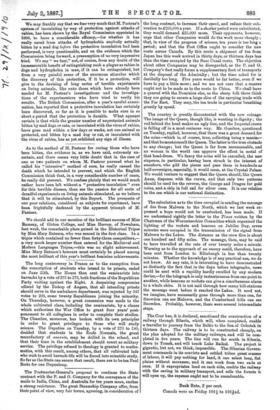The calculation as to the time occupied in sending the
message of fire from Malvern to the North, which we last week ex- pressed a hope would not be overlooked, has been made. If we understand rightly the letter to the Times written by the Chairman of the Worcestershire Committee which organised the lighting of the rockets and beacons on Jubilee Day, seven minutes were occupied in the transmission of the signal from Malvern to the Lakes. The distance as the crow flies is about one hundred and fifty miles. The message, then, may be said to have travelled at the rate of over twenty miles a minute. Warning as to the approach of an enemy could, therefore, have been sent from London to Edinburgh in less than twenty minutes. Whether the knowledge is of any practical use, we do not know. At any rate, it is interesting to have demonstrated so distinctly the fact that in the days before telegraphs, news could be sent with a rapidity hardly excelled by any modern device,—for the telegraph is only instantaneous from one point to another, while beacons or rockets can give a simultaneous alarm to a whole shire. It is not said through how many hill-stations the message went before it reached the Lakes. It need not, we imagine, have necessarily gone through more than one, for Snowdon can see Malyern, and the Cumberland hills can see Snowdon. Probably, however, there were several intermediate steps.


































 Previous page
Previous page